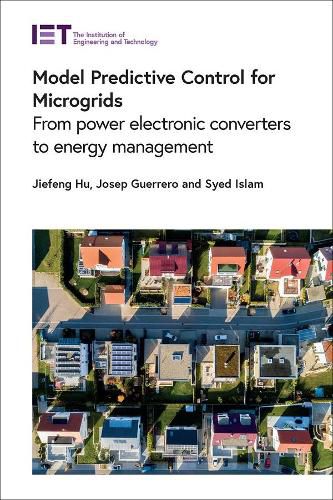Readings Newsletter
Become a Readings Member to make your shopping experience even easier.
Sign in or sign up for free!
You’re not far away from qualifying for FREE standard shipping within Australia
You’ve qualified for FREE standard shipping within Australia
The cart is loading…






Microgrids have emerged as a promising solution for accommodating the integration of renewable energy resources. But the intermittency of renewable generation is posing challenges such as voltage/frequency fluctuations, and grid stability issues in grid-connected modes. Model predictive control (MPC) is a method for controlling a process while satisfying a set of constraints. It has been in use for chemical plants and in oil refineries since the 1980s, but in recent years has been deployed for power systems and electronics as well.
This concise work for researchers, engineers and graduate students focuses on the use of MPC for distributed renewable power generation in microgrids. Fluctuating outputs from renewable energy sources and variable load demands are covered, as are control design concepts. The authors provide examples and case studies to validate the theory with both simulation and experimental results and review the shortcomings and future developments.
Chapters treat power electronic converters and control; modelling and hierarchical control of microgrids; use of MPC for PV and wind power; voltage support; parallel PV-ESS microgrids; secondary restoration capability; and tertiary power flow optimization.
$9.00 standard shipping within Australia
FREE standard shipping within Australia for orders over $100.00
Express & International shipping calculated at checkout
Stock availability can be subject to change without notice. We recommend calling the shop or contacting our online team to check availability of low stock items. Please see our Shopping Online page for more details.
Microgrids have emerged as a promising solution for accommodating the integration of renewable energy resources. But the intermittency of renewable generation is posing challenges such as voltage/frequency fluctuations, and grid stability issues in grid-connected modes. Model predictive control (MPC) is a method for controlling a process while satisfying a set of constraints. It has been in use for chemical plants and in oil refineries since the 1980s, but in recent years has been deployed for power systems and electronics as well.
This concise work for researchers, engineers and graduate students focuses on the use of MPC for distributed renewable power generation in microgrids. Fluctuating outputs from renewable energy sources and variable load demands are covered, as are control design concepts. The authors provide examples and case studies to validate the theory with both simulation and experimental results and review the shortcomings and future developments.
Chapters treat power electronic converters and control; modelling and hierarchical control of microgrids; use of MPC for PV and wind power; voltage support; parallel PV-ESS microgrids; secondary restoration capability; and tertiary power flow optimization.